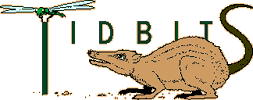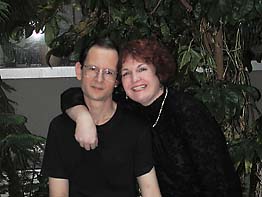 |
||
|
• Congratulations are due!
To Jere Lipps for his election to President of the Cushman Foundation for Foraminiferal Research, Inc. for 2001–2002. To Dr. Healy Hamilton for her disseration, “Phylogeny and Evolution of River Dolphins.” Healy will be joining the California Academy of Sciences as head of the Center for Biodiversity Research and Information. To Dr. Tom Stidham for completing his dissertation, “The Origin and Ecological Diversification of Modern Birds: Evidence from the Extinct Wading Birds Presbyornithidae (Neornithes: Anseriformes).” • A farewell and thanks to Axel Hungerbuehler and Simone Klutzny
Axel visited us some time ago, supported by the Welles Fund, to work on the taxonomy and biostratigraphy of our phytosaurs. He took such good care of them that we contrived to attract him back to combine his further research with curatorial duties. Anyone who has seen his meticulous reassembly of our disassociated phytosaur skulls (which look like they died by swallowing a hand grenade) will have only the utmost respect for his craft. And, as his future publications will show, he has managed to reshuffle the taxonomy and relationships of many of these animals as well! |
 Axel and Simone. (photo by Judy Scotchmoor) • Visitors to the Collections
The vertebrate and plant collections saw a lot of traffic in 2001. Museum Scientist Pat Holroyd reports a total of 95 visitors (these include, among others, researchers, companies doing records searches, and visiting paleontologists) to the vertebrate collections for the year, while fellow Museum Scientist Diane Erwin tallied 29 visitors to the plant collection. Visitors came from as far away as Brazil, Germany, Russia, Australia, Great Britain, Japan, and South Africa.
Return to the Front page | |